Chirag Ramesh Srivatsa
Channel State Information Based User Censoring in Irregular Repetition Slotted Aloha
Feb 24, 2023Abstract:Irregular repetition slotted aloha (IRSA) is a massive random access protocol which can be used to serve a large number of users while achieving a packet loss rate (PLR) close to zero. However, if the number of users is too high, then the system is interference limited and the PLR is close to one. In this paper, we propose a variant of IRSA in the interference limited regime, namely Censored-IRSA (C-IRSA), wherein users with poor channel states censor themselves from transmitting their packets. We theoretically analyze the throughput performance of C-IRSA via density evolution. Using this, we derive closed-form expressions for the optimal choice of the censor threshold which maximizes the throughput while achieving zero PLR among uncensored users. Through extensive numerical simulations, we show that C-IRSA can achieve a 4$\times$ improvement in the peak throughput compared to conventional IRSA.
Performance Analysis of Irregular Repetition Slotted Aloha with Multi-Cell Interference
May 14, 2022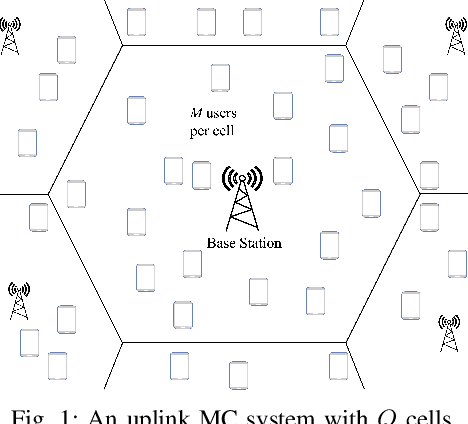
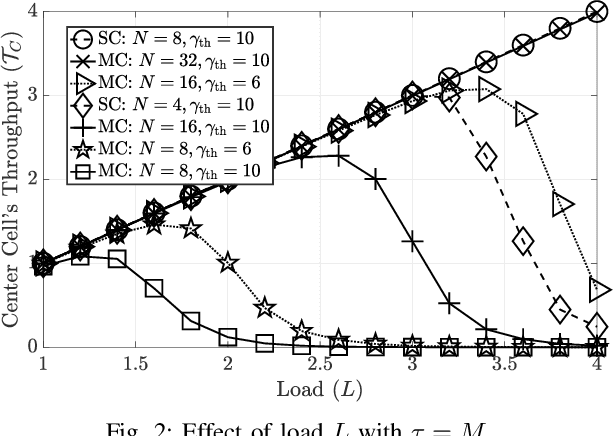
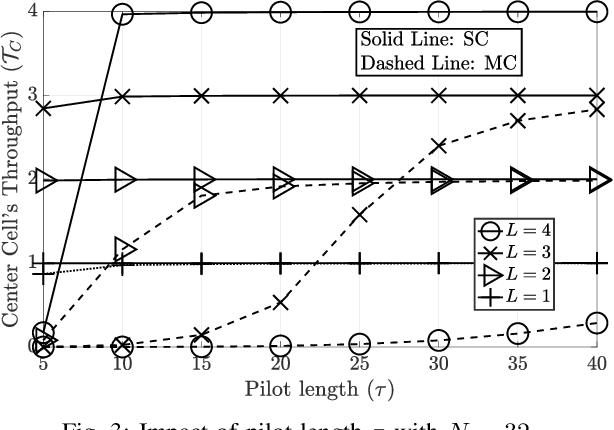
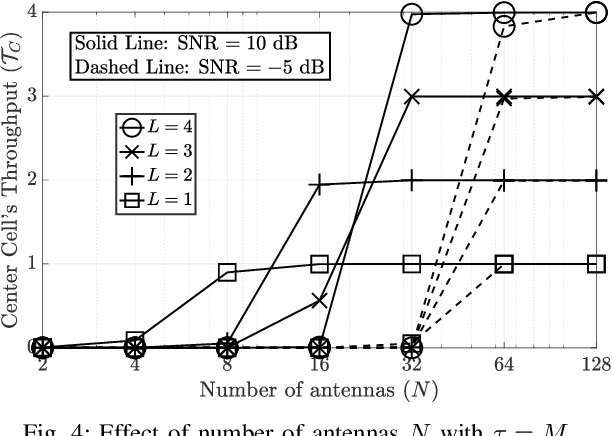
Abstract:Irregular repetition slotted aloha (IRSA) is a massive random access protocol in which users transmit several replicas of their packet over a frame to a base station. Existing studies have analyzed IRSA in the single-cell (SC) setup, which does not extend to the more practically relevant multi-cell (MC) setup due to the inter-cell interference. In this work, we analyze MC IRSA, accounting for pilot contamination and multiuser interference. Via numerical simulations, we illustrate that, in practical settings, MC IRSA can have a drastic loss of throughput, up to $70\%$, compared to SC IRSA. Further, MC IRSA requires a significantly higher training length (about 4-5x compared to SC IRSA), in order to support the same user density and achieve the same throughput. We also provide insights into the impact of the pilot length, number of antennas, and signal to noise ratio on the performance of MC IRSA.
On the Impact of Channel Estimation on the Design and Analysis of IRSA based Systems
Dec 14, 2021



Abstract:Irregular repetition slotted aloha (IRSA) is a distributed grant-free random access protocol where users transmit multiple replicas of their packets to a base station (BS). The BS recovers the packets using successive interference cancellation. In this paper, we first derive channel estimates for IRSA, exploiting the sparsity structure of IRSA transmissions, when non-orthogonal pilots are employed across users to facilitate channel estimation at the BS. Allowing for the use of non-orthogonal pilots is important, as the length of orthogonal pilots scales linearly with the total number of devices, leading to prohibitive overhead as the number of devices increases. Next, we present a novel analysis of the throughput of IRSA under practical channel estimation errors, with the use of multiple antennas at the BS. Finally, we theoretically characterize the asymptotic throughput performance of IRSA using a density evolution based analysis. Simulation results underline the importance of accounting for channel estimation errors in analyzing IRSA, which can even lead to 70% loss in performance in severely interference-limited regimes. We also provide novel insights on the effect of parameters such as pilot length, SNR, number of antennas at the BS, etc, on the system throughput.
User Activity Detection for Irregular Repetition Slotted Aloha based MMTC
Nov 11, 2021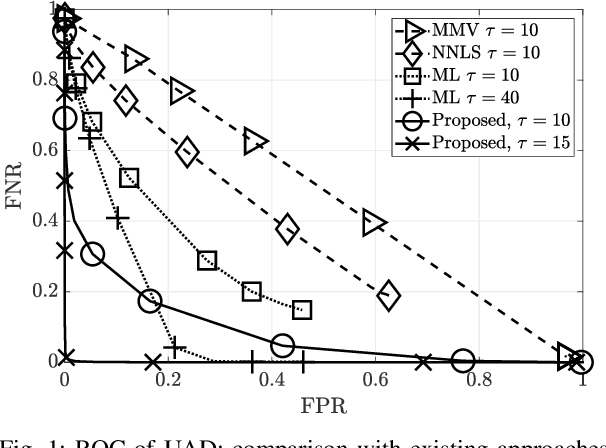

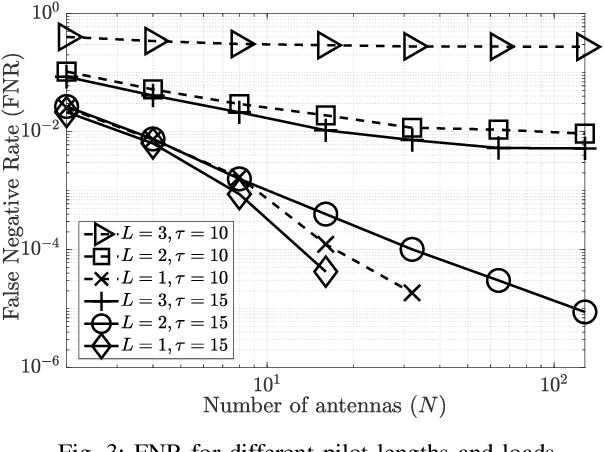

Abstract:Irregular repetition slotted aloha (IRSA) is a grant-free random access protocol for massive machine-type communications, where a large number of users sporadically send their data packets to a base station (BS). IRSA is a completely distributed multiple access protocol: in any given frame, a small subset of the users, i.e., the active users, transmit replicas of their packet in randomly selected resource elements (REs). The first step in the decoding process at the BS is to detect which users are active in each frame. To this end, a novel Bayesian user activity detection (UAD) algorithm is developed, which exploits both the sparsity in user activity as well as the underlying structure of IRSA-based transmissions. Next, the Cramer-Rao bound (CRB) on the mean squared error in channel estimation is derived. It is empirically shown that the channel estimates obtained as a by-product of the proposed UAD algorithm achieves the CRB. Then, the signal to interference plus noise ratio achieved by the users is analyzed, accounting for UAD, channel estimation errors, and pilot contamination. The impact of these non-idealities on the throughput of IRSA is illustrated via Monte Carlo simulations. For example, in a system with 1500 users and 10% of the users being active per frame, a pilot length of as low as 20 symbols is sufficient for accurate user activity detection. In contrast, using classical compressed sensing approaches for UAD would require a pilot length of about 346 symbols. The results also reveal crucial insights into dependence of UAD errors and throughput on parameters such as the length of the pilot sequence, the number of antennas at the BS, the number of users, and the signal to noise ratio.
 Add to Chrome
Add to Chrome Add to Firefox
Add to Firefox Add to Edge
Add to Edge